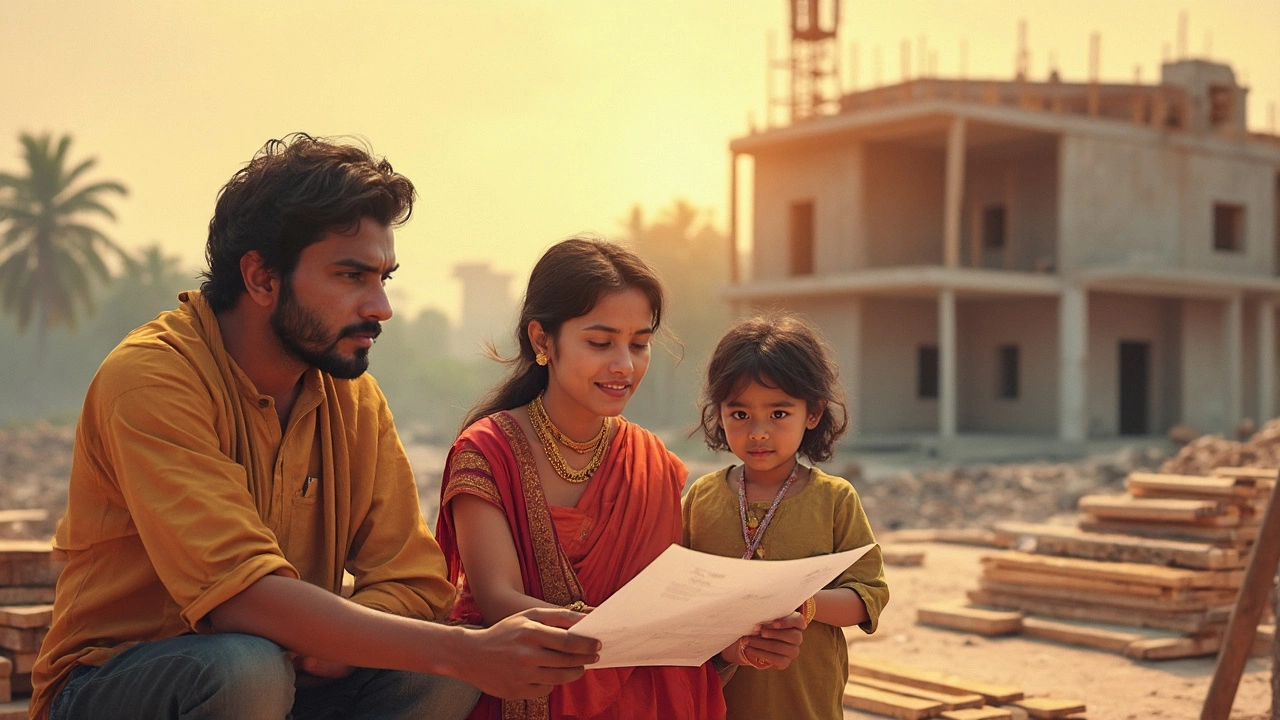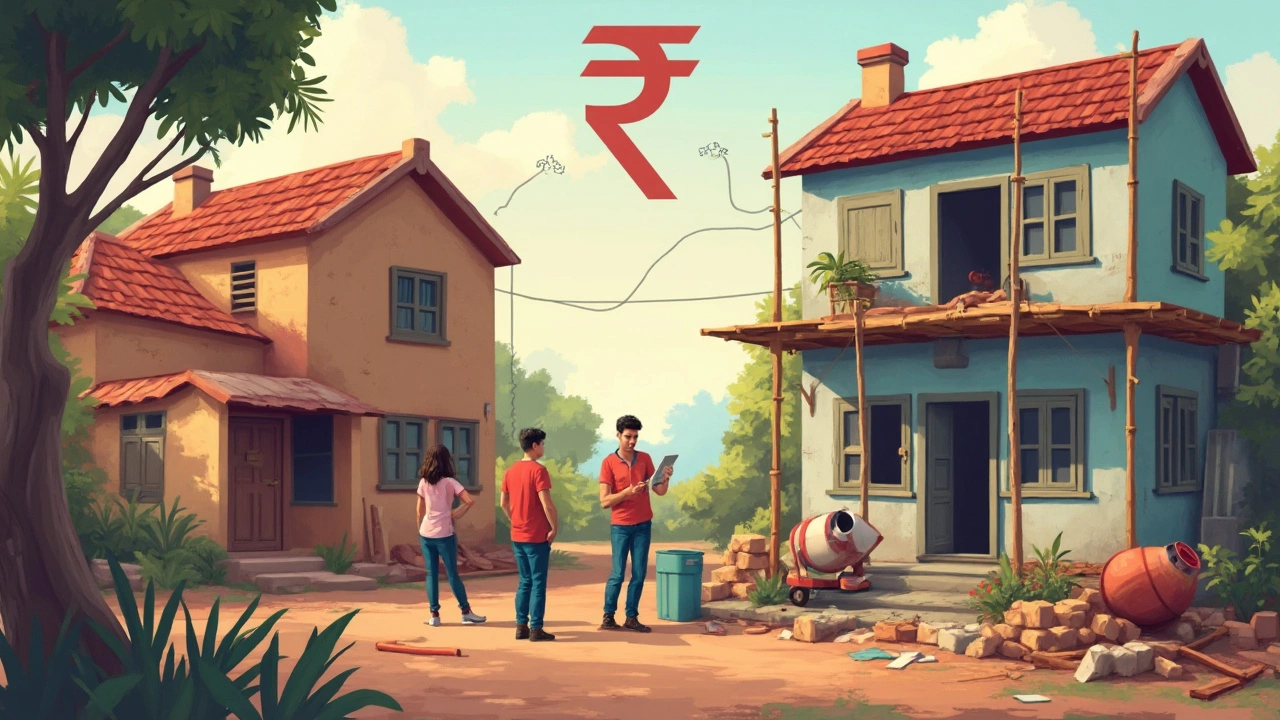Is Building a House Cheaper? Full Guide on Costs, Customization, and Smart Decisions

Picture this: Instead of settling for the same old row of semis or fighting for a bidding win on an uninspiring house, you actually get to imagine what your dream place looks like – and you make it real from the ground up. Sounds fantastic, right? But here's the question that can turn that fantasy into a stress headache: is it actually cheaper and smarter to build your own place than to just go buy one that's ready to move into?
The Real Costs: What Does It Actually Take to Build a House?
If you believe the Instagram vision of homebuilding – all perfect blueprints and golden sunsets – you’re missing half the story. When you build, you’re the boss... and bear the consequences. The main expenses? Land, planning/permission fees, materials, labour, and a mile-long list of extras you honestly never thought about until your builder brings them up at 8 a.m. on a Monday.
Start with land. In the UK, especially somewhere like Greater Manchester, decent plots are like gold dust. The price swings everywhere, but data from the Royal Institution of Chartered Surveyors in early 2025 says a typical plot outside city centres is £80,000–£140,000. Double that if you want something sizeable inside city bounds. Don't forget stamp duty and legal fees on top. Once you’ve secured your piece of mud, planning costs are next. These can set you back between £4,000–£17,000, depending on everything from local restrictions to complex soil studies.
Now for the build itself. Construction costs average around £1,800–£3,000 per square metre in 2025, according to NHBC stats, and that’s just the shell. Want fancy kitchen gadgets, proper insulation, or eco-spec upgrades? Those extras creep in fast. It’s easy for self-builders to spend £350,000–£550,000 on a 4-bed, compared to buying a similar one new, often for a similar or higher price – minus the building stress. Still, you call all the shots.
And then: the hidden extras. Temporary site services, skip hire, driveway, fences, council levies, connecting to utilities—it adds up quickly. You need a strong contingency fund, too. A 2022 Homebuilding & Renovating magazine survey found most UK self-builders spent at least 10-20% more than planned, thanks to inflation and supply hiccups.
Comparing Building and Buying: Is the Financial Gamble Worth It?
Forget those old school sayings like "buying always wins." The landscape is shifting. Housing stock in 2025 is short, and prices remain punchy in nearly all parts of the UK. The Halifax House Price Index showed the average UK home cost just north of £289,000 this spring. But, for anyone with a vision—and maybe a talented mate who can wrangle bricks or electrics—building is tempting.
So, what’s the catch? When you buy a house, you fork over asking price, stamp duty, and fees—but you can move in straight away, and if you find a bargain or put in some sweat equity with upgrades, you might make a tidy profit down the line. Building flips this logic. You’re getting exactly what you want, and modern builds (if done right) are worth more per metre, since they meet strict energy rules in the UK’s Future Homes Standard, and buyers love new tech. But try selling a wacky custom design, and mainstream buyers might walk away, so resale value isn’t guaranteed. Ask local estate agents before you go wild with your plans.
Building does have a cost-control advantage: you pick finishes and specs. Got a tight budget? Stick to basic fixtures, simpler layouts, and practical features. But if you slip up—or don’t keep a close eye on your builder—costs can balloon. According to a 2023 report from the National Self Build and Renovation Centre, about 60% of self-builders end up over-budget. And then there’s time: expect 9-18 months from plot to finish for a simple project, or longer if you hit weather delays or planning grief.
The clincher for many: you could end up with instant equity. If your build costs are less than the house’s finished value, you’ve made money on day one. On the flip side, if prices slump or you over-spec, you might struggle to get your cash back in a hurry. Building sounds like a clever move for those who can budget tightly, stomach the stress, and value a tailored home, not just a return.

Ways to Save Money Building a House
Now for the juicy part—how to keep cash in your pocket instead of handing it to your architect or builder. First, do your homework on location. Plots are cheaper in areas outside city hotspots, so if you’re willing to commute a bit, you can slice tens of thousands off your land cost. Just check local transport links, because nobody wants to live miles from a pint or decent curry.
If you’ve got some trade skills—or know people who do—consider doing part of the work yourself. Lots of builders let you “self-project manage.” You’ll save 10–20% on markups but watch out: things get hairy with trades coordination, and mistakes can cost a bomb to fix. Still, it’s possible to save serious money if you’re organised and not shy of a hard day’s graft.
Buy materials in bulk where you can. Builders’ merchants offer huge discounts if you order everything at once. Don’t just take your builder’s word on prices—get second quotes and open up competition.
Be smart with design. The more corners, fancy windows, and odd-shaped rooms, the pricier the build. Compact footprints are cheaper to heat and easier to build, so modern box-style homes usually come in cheaper. Chuck in energy-efficient features like solar panels, triple glazing, and underfloor heating during the build—that way, they’re VAT-free due to the UK’s relief scheme for new homes. Over the first five years, you’ll claw back more than you spend in lower bills.
Consider modular or kit homes. They build fast, save labour costs, and their prices are set in advance—fewer nasty surprises. A typical modular 3-bed costs 15-25% less than traditional brick builds. The style is way better than the flat-pack stigma of old, and the build time is about half as long.
- Think about grant schemes: there are still government schemes out there helping people build greener, smarter homes or build in rural spots. They’re usually limited, so check with your council or Homes England’s Self Build Portal.
- Plan for VAT refunds: Build a brand new home, and you get to reclaim VAT on most construction materials—a 20% saving, which adds up fast.
Finally, keep a close eye on your timeline. Every week a build runs over means more money out for rented housing or mortgage payments, so regular site visits and project tracking are key. The success stories usually come from people who micromanaged the process—or worked with a pro project manager who charged a flat fee instead of a percentage.
Pitfalls, Nightmares, and Hidden Perks of Building
Everyone loves the tale of the guy who built for half the price and now lounges in his VAT-free hot tub. But there are horror stories. Hidden pipes underground, council planners who drag things out for months, or a builder who ghosts you halfway through the frame. The HomeOwners Alliance 2024 Self-Build Survey revealed that nearly 30% of self-builders face serious planning-related delays, and 1 in 10 have some kind of dispute with their main contractor. Building insurance, warranty, and all the legal red tape can get tricky unless you read every form and keep good records.
One big thing to watch: cash flow. The payment schedule is nothing like buying a house. You need to front up cash in stages—often 10 times or more. If you run out or the bank drags their feet on your next mortgage tranche, everything grinds to a halt. Make sure your mortgage is specifically for self-builds; standard ones don’t work, and banks like BuildStore or Ecology are your best bet in the UK.
Build a house without a strict budget plan and you’ll join the club of over-ambitious dreamers who ran out of funds at the kitchen units stage. You should always factor in a minimum 15% contingency. Stuff goes wrong. Things take longer. The weather is not your mate in Manchester. Max, my dog, once trotted through wet cement—thankfully, not a disaster, but it made me laugh and showed me how much can go off-script when building at home.
But then there’s the pure satisfaction: you get the space you want, pay zero stamp duty on the build price itself (you only pay if your land plot is over £250,000 right now), and every inch reflects your choices—not the developer’s cost-cutting. You’ll know every cavity’s insulated, every cable run tight, and getting the neighbours you actually want (if they're not too close!). Best of all, innovative new builds fetch top prices in 2025, especially with green credentials and smart tech already onboard, so selling isn’t as tough as it once was. Just watch the market and don’t overdo the one-off quirks unless you’re planning to stay put.
Building a house isn’t for everyone, but for the detail-minded, the patient, and those with a bit of savvy, it’s a real shot at living in a home nobody else has. Just don’t expect an easy ride — just like owning a stubborn dog, it’s work, it’s tricky, but for some, it’s totally worth it.
Write a comment